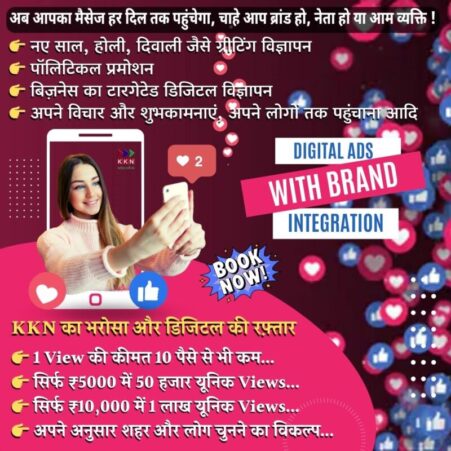KKN Gurugram Desk | The Indian Institute of Technology Delhi (IIT Delhi) is set to launch a groundbreaking B.Tech in Design program starting academic year 2025–26. This innovative four-year undergraduate degree merges core engineering principles with creative design thinking, preparing students to solve complex socio-technical problems. Applicants must clear both the JEE Advanced and Undergraduate Common Entrance Examination for Design (UCEED) to qualify—marking a significant shift in how IITs approach design education .
Article Contents
What Is B.Tech in Design?
This program is being offered by the Department of Design and aims to produce graduates skilled in engineering as well as empathetic, creative problem-solvers . It is structured as a transdisciplinary course that includes:
-
Fundamental engineering analysis
-
Design thinking and prototyping
-
Research methods for socio-technical systems
-
Communication, teamwork, and presentation skills
With a focus on product design, this B.Tech integrates systematic inquiry with creative expression, equipping students to address real-world social and industrial challenges effectively .
Admission Criteria: Two Examinations Required
To qualify for this B.Tech in Design, candidates must satisfy both of the following criteria:
-
JEE Advanced — As used for conventional engineering programs
-
UCEED — The national-level design aptitude test conducted by IIT Bombay .
This dual requirement ensures that incoming students possess strong analytical capabilities along with creative aptitude—an essential combination for this transdisciplinary course.
Eligibility & Application Process
Eligibility:
-
Students must have passed 12th grade in 2024 or 2025, with Physics, Chemistry, and Mathematics.
-
Age limit: Born on or after October 1, 2000 (5-year relaxation for SC/ST/PwD) .
-
Must appear in both JEE Advanced and UCEED.
Application:
-
Applications will be accepted online via the official IIT Delhi admissions portal.
-
Candidates must provide their JEE Advanced rank and a valid UCEED score.
-
The portal will list deadlines for application, seat allocation, and counseling.
Programme Structure & Curriculum
This B.Tech programme requires completion of approximately 155 credits, with an intake of 20 students in the first batch . The curriculum is divided as follows:
-
~50% Design Core: User-centered design, prototyping, system design
-
~50% Foundational/Core Disciplines: Engineering, humanities, sciences, and policy (common with other B.Tech programmes)
Key areas include:
-
Design thinking frameworks
-
Mechanics, materials, and environmental sciences
-
Research methods, communication, and teamwork
-
Design entrepreneurship and exhibition skills
Frequent collaborations across departments allow students to blend technical proficiency with creative problem-solving .
Programme Highlights & Career Outcomes
Graduates can expect to embark on careers in:
-
Product, industrial, and user experience design
-
Design research and strategy
-
Innovation-driven sectors, including mobility and sustainability
-
Entrepreneurship and cross-industry collaborations
-
Further studies in M.Des/M.Tech or research-focused tracks
IIT Delhi’s industry network and open-curriculum model—newly integrated across all UG, PG, and Ph.D. programs—provides students with major career flexibility and interdisciplinary exposure.
Comparative Landscape: IIT Delhi vs Other Institutions
While IIT Bombay and IISc have longstanding B.Des programs (admission via UCEED), IIT Delhi’s formal B.Tech in Design—not just a B.Des—is a novel development
IIT Hyderabad also offers engineering-design programs, but Delhi’s version combines full-scale UCEED+JEE requirement, positioning it at the top of design-technology infusion .
The launch of B.Tech in Design at IIT Delhi is a transformative step in engineering education. By marrying analytical rigor with creative problem-solving, this program is poised to produce graduates who can drive innovative solutions across society and industry. As the admission process closes and the first batch takes its initial steps, stakeholders will be watching closely to see how this program shapes India’s design-technology landscape.
Discover more from
Subscribe to get the latest posts sent to your email.



